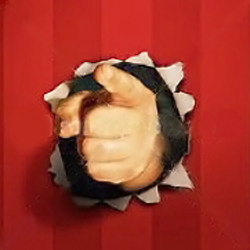Cue the dramatic, scary music, something Bernard Herrman-esque.
Add a voiceover from Rod Serling: “Imagine, if you will, a full venue, a hot new band, an energized audience, the latest technology everywhere – and – something unusual is about to happen.”
On two nights, two different mixers work the same show.
On the first night, sound is appalling. The mix is edgy, way too loud (cruising above 110 dB), muddled with no clarity defining vocals and instruments, and no musical separation.
All circuits are set to “stun” and the warp drive is at 11, the dilithium crystals are glowing like the surface of a supernova, there isn’t a peak or clip light that isn’t flashing, the drive racks are lit up like a 4th of July fireworks show.
And nobody with the sound crew or on stage seems to think anything is wrong.
Meanwhile, the audience is fleeing the scene in ever-increasing numbers, holding their ears.
They’d complain if they thought anyone could even hear them. And they’ll all remember this experience….
On the second night, things are dramatically different. As if by magic, the hard brittle edge is gone, vocal intelligibility is right on, maximum SPL rides up and down in the 90 dB-100 dB range, taking advantage of the natural dynamics of the music.
Having enjoyed the full show, the audience walks contentedly to their cars, talking about the great performance. And they’ll all remember this experience….
From one show to the next, did some alien life form beam down to the venue and change the system set-up? Was a whole new rig put into place overnight?
Nope. It’s exactly the same.
What did change is the individual responsible for the house sound mix. The hardware doesn’t decide on it’s own to go to maximum output power.
It can’t make the decision to drive every input to the edge of disaster and force all the warning indicators to illuminate.
Rather, it takes a set of hands and a pair of ears to make this happen, involving conscious choices to move the knobs and slide the faders, push the buttons and set the dials.















